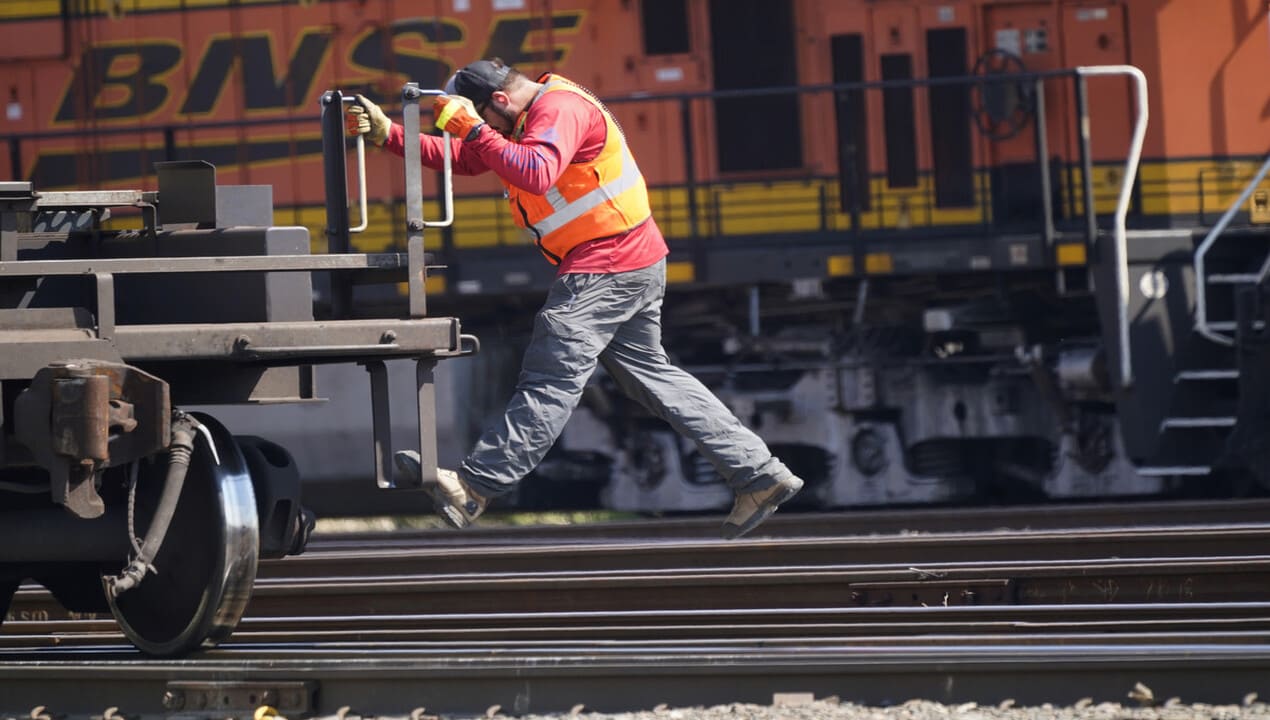
Independent Report – U.S. lawmakers and labor unions have expressed strong opposition to a railroad industry plan that would rely more heavily on automated systems for track safety inspections. The proposal, spearheaded by the Association of American Railroads (AAR), aims to reduce the role of human inspectors, raising concerns that automation could increase the risk of accidents.
The debate over this plan highlights growing tensions in the transportation industry worldwide as companies adopt more automated technology. U.S. lawmakers, along with industry leaders, are also considering the impact of regulations. At the same time, U.S. President Donald Trump has pushed to reduce rules, which he claims are slowing economic growth. These two trends intersect in the discussion over rail safety and operational efficiency.
In April, the AAR requested a waiver from the Federal Railroad Administration (FRA). If granted, this waiver would allow freight railroads using automation to reduce human-conducted track inspections by 75 percent. Railroads employing a “track geometry measurement system” (TGMS) could cut inspections from twice a week to just twice a month. The system attaches to rail cars and identifies potential derailment risks, such as warped tracks or rails spaced incorrectly.
The proposed waiver would also give railroads up to 72 hours to address defects detected by TGMS. Currently, human inspectors can take immediate action, including slowing or stopping trains if safety hazards are found. Proponents argue that the automated system allows earlier detection and faster remediation of track defects. Trade organizations representing manufacturing and agriculture sectors have also voiced support, emphasizing the potential for improved efficiency.
Also Read : Hegseth Removes Top Intelligence and Military Officials
However, labor leaders strongly contest the plan. Tony Cardwell, president of the Brotherhood of Maintenance of Way Employees Division (BMWED), criticized AAR’s analysis. He explained that TGMS technology covers only a quarter of the inspection items that human inspectors routinely check. Human inspectors also identify foundational problems, such as broken ties or water damage, earlier than technology can. “Track geometry is the end result of a defect, not the cause of a defect,” Cardwell emphasized.
Opponents also point to past incidents as evidence of the limitations of automated inspections. A 2021 Amtrak derailment killed three passengers, and a subsequent government report concluded that automated inspections do not detect as many types of hazards as human inspections. Many Democratic US Lawmakers have publicly urged the FRA to reject the waiver, including a dozen senators and members of the House Transportation and Infrastructure Committee. Kansas Governor Laura Kelly also warned that reducing human inspections could compromise public safety. Republican lawmakers, by contrast, did not submit comments on the proposal.
AAR and its supporters maintain that the waiver would enhance safety and improve operational efficiency. Michael Rush, AAR’s senior vice president for safety and operations, argued that layering modern technology over outdated inspection methods is essential for maintaining competitiveness. Major railroads such as Union Pacific, Norfolk Southern, and BNSF, as well as industry trade groups like the National Association of Manufacturers and the National Grain and Feed Association, back the proposal.
The FRA has yet to make a decision, and no deadline is currently set. Overall, train derailment rates in the United States have declined over the past twenty years, though an average of three incidents still occur daily. Some accidents have caused significant damage. For instance, Norfolk Southern’s 2023 derailment in East Palestine, Ohio, prompted a billion-dollar environmental cleanup. Earlier, in 2021, an Amtrak derailment in Montana resulted in three passenger deaths.
A National Transportation Safety Board report following the Amtrak accident highlighted the limitations of TGMS technology. While the system provides detailed data on certain track parameters, it does not detect the full range of hazards that human inspectors can identify. Critics argue that relying too heavily on automation could leave some risks unaddressed, potentially compromising passenger and worker safety.
The dispute over automated track inspections underscores the tension between technological innovation, operational efficiency, and safety. As railroads push for modernization, lawmakers, labor groups, and regulators face the challenge of balancing these priorities to ensure that automation does not come at the expense of public safety. The FRA’s decision will likely have far-reaching implications for the future of railroad operations in the United States.
Also Read : Thai Police Arrest Chinese Hacker Who Stole Jungkook BTS’s Shares